
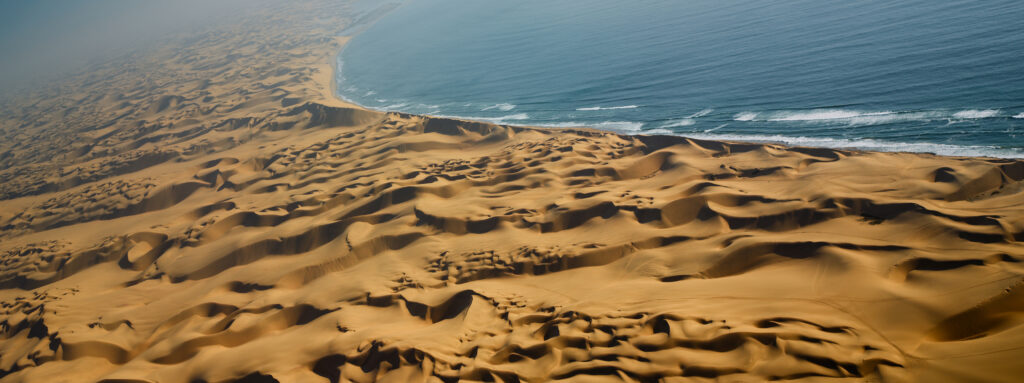
Sardinian-born, Neels Castillon is a film director and artist based in Paris. His work combines visual art and storytelling with a distinctive voice. The artist is known for exploring our relationship with the natural world and creating visually rich films, often shot in challenging environments. In 2018, he was named one of ADC Young guns — Best creatives under 30.
Castillon’s work includes award-winning shorts, music videos, feature documentaries, and collaborations with global brands like Louis Vuitton, Meta, and Audemars Piguet. In 2022, he became a member of the Directors Guild of America (DGA). Castillon is also a co-founder of Motion Palace, a Paris-based creative studio producing original content for brands, culture, and the arts.
Motion Palace works in collaboration with the Ridley Scott Creative Group. Castillon enjoys shooting with artists and athletes, and especially dancers, who are his main source of inspiration. A sought-after director, his commissions range from worldwide commercial campaigns to official music videos and award-winning experimental shorts often filmed in challenging environments.
ArtsBeatLA interviewed Neels Castillon to learn more about the Cercle Odyssey events that are coming to LA in May.
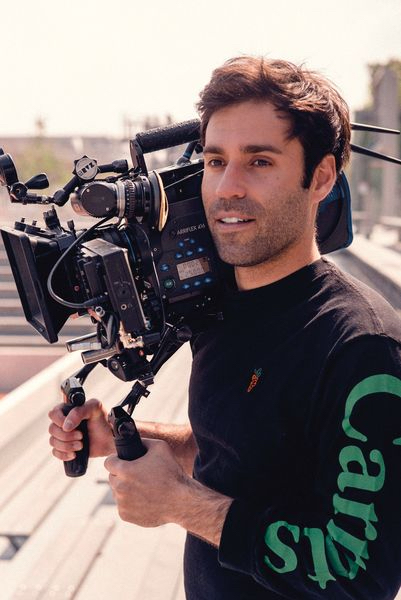
In 2018 you were one of the recipients of the Young Guns 16 awards. What does that mean to you and how did that accolade assist with your career?
“Each year, the ADC One Club’s Young Guns selects 30 creatives under the age of 30 from around the world. Being part of that group was a real spotlight on my work in the creative industry. I saw it as a strong encouragement to keep going, but also as a meaningful validation that opened the door to more international projects. Many of the nominees have gone on to build remarkable careers — the jury clearly had a great eye.”
The concept for this 360° immersive concert experience originates with Derek Barbolla, the Founder and Creative Director of Cercle. I understand that Barbolla founded the enterprise eight years ago with the intention to “Mix cinema with music.”
“Under Derek Barbolla’s leadership, Cercle has produced over 240 concerts across 31 countries, featuring renowned electronic artists such as Ben Böhmer, Solomun, Carl Cox, and Sofiane Pamart. The company also launched Cercle Records, its own music label.
Now comes Cercle Odyssey — the next chapter in Cercle’s evolution — a monumental, nomadic, and immersive experience that merges live music, cinema with cutting-edge technology.”
When did you first begin discussions with Barbolla and when were you first brought on board? In what ways did you help to develop this concept in a more practical or concrete way?
“Barbolla and I had been observing each other’s work from a distance for quite some time, with mutual respect and admiration for what we each do. When he called me, he already had the broad vision for the project — the design of the venue, and a strong artistic ambition.
I was truly honored that he entrusted me with directing the film; it was a huge responsibility. I agreed, on the condition that I could write the script, direct, and produce the film through my production company, Motion Palace.
“He gave me incredible creative freedom — it was a dream collaboration. We share a deep artistic sensibility and taste, and constantly pushed each other to go further.
In this project, everyone collaborated with everyone — sound with film, film with light, even scent was part of the experience, projected into the space. During rehearsals, we all tried to find a kind of symbiosis, learning from and feeding off one another to elevate the whole.”
Theater occupies a unique place in our culture as a live event that engages us in storytelling through characters and their conflicts. It’s my understanding that what Cercle offers people is not simply an immersive experience, but a shared experience with a crowd of other people in the same space—are you attempting to promote a deeper level of connection and empathy, by creating a situation that encourages communal understanding and growth?
“Absolutely — the shared energy of a crowd during a concert, or an audience in a cinema, adds so much to the experience. Sharing a moment amplifies both emotion and sensation.
Our monumental and immersive project is designed precisely with that in mind. By blending music, film, sound, and light, we aim to create a singular, deeply emotional journey — something that engages the senses on every level.
At the heart of it all is a narrative dimension — a strong sense of storytelling that guides the experience and evokes emotion. It’s not just about visuals or sound; it’s about crafting a meaningful arc that resonates with people on a deeper level.
The participating artists are fully involved in shaping the experience, ensuring that it’s not just a beautiful set built around their music, but a true 90-minute voyage — one that carries the audience somewhere else entirely.
Phones will be banned, just like in a cinema. We want the public to be fully present, to surrender to the moment and live it completely.”
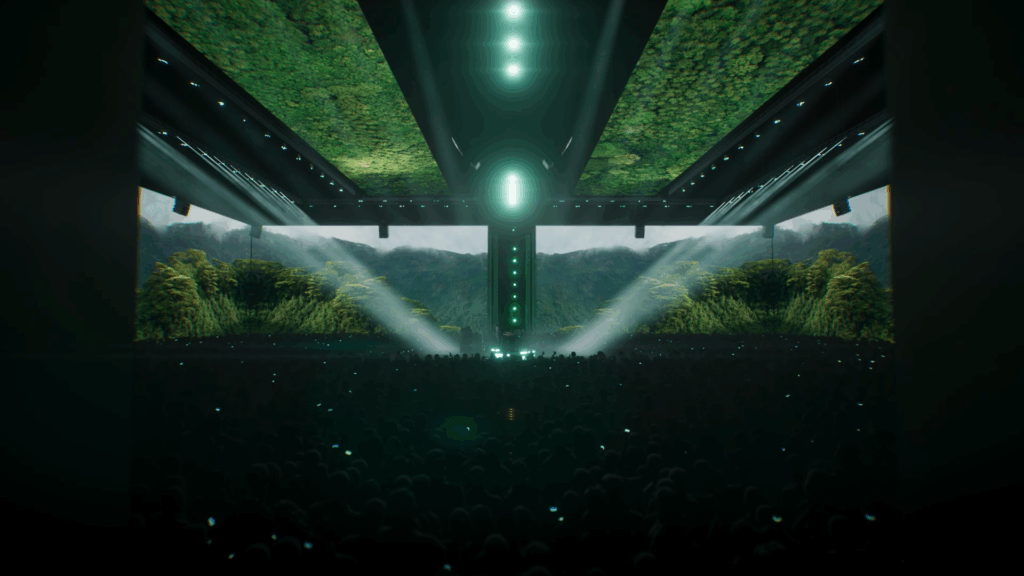
Inserting a narrative into an immersive spectacle sounds next-level; instilling an extravagantly-staged live visual and aural entertainment with an emotional thread. For your underpinning narrative you selected Homer’s epic poem The Odyssey—why? What are the themes and elements of this great work of literature that are both inspirational to you and also applicable to this event’s concept?
“Of course, weaving a narrative into such an immersive spectacle was a massive challenge — especially creating a storyline that could support the music without overpowering it. The storytelling exists in service of the music, allowing it to breathe and lead the emotional journey. At the same time, the music amplifies the images, and many of the artists involved — like Moby, for example — have deeply cinematic styles that naturally elevate the visual narrative. His music brings a whole new emotional depth to the scenes we’ve created.
The core idea was to make a film that combines acting, dance, and a poetic exploration of our planet — a visual odyssey in every sense. The central theme is the idea of returning home. Like Odysseus, condemned by the gods and endlessly diverted, our protagonist journeys through awe-inspiring landscapes and encounters fantastical characters. We were drawn to the wild originality of Homer’s Odyssey — its surreal imagination, its emotional resonance, and its timeless sense of adventure.
It also felt like a return to the roots of cinema — a kind of modern silent film, where music takes the lead. In early cinema, live music was often played during screenings to bring the visuals to life, and that’s something we’re echoing here. There’s something incredibly powerful and subjective about that kind of experience — the way music, visuals, and emotion can merge to create something that feels both intimate and epic.”
Your primary concept was to “put the artists in nature” which evolved into bringing nature cinematography inside the venue / concert halls for the audience to be surrounded by. Can you talk more about this evolution, and where you filmed and what footage you were able to obtain over the past year of location shooting?
“It took us over a year to shoot this film, traveling across multiple continents to capture the natural elements that would become the soul of the experience. My initial idea was to create four distinct chromatic worlds — each tied to a specific landscape and emotion.
We filmed in the Namib Desert for its golden sands, Tetiaora — a tiny atoll in French Polynesia — for the pure, endless blues of the ocean, and the untouched forests of the Marquesas Islands to immerse the viewer in deep, vibrant greens. For white, we turned to the Icelandic highlands, whose arctic-like desolation evokes a sense of both isolation and wonder. We also filmed on the Salar de Uyuni in Bolivia — a surreal, infinite mirror where earth and sky merge into one. It felt like stepping into a dreamscape.
At first, Cercle was to put artists directly into nature, but with Odyssey it evolved — instead, we brought nature inside. Massive, high-resolution projections screens now surround the audience, immersing them in these vast, breathtaking environments while the music unfolds live. It’s a bold choice, to shoot entirely in the wild, but I deeply believe in the evocative power of landscapes. Nature, in its raw and infinite beauty, invites reflection. It also confronts us with our scale — our characters often appear tiny, almost lost within these enormous settings.
On screen, that contrast creates something quietly powerful: it raises questions about our place on the planet, while also offering a deeply sensory experience. I think immersing the audience 360 degrees in these natural worlds will feel both calming and euphoric — a kind of poetic escape.”

With so much imagination and creativity at play, how do you manage all these massive ideas and harness them into a working project?
When do you think you will be able to take a big sigh and declare to yourself – this is it. We did it. “Ça suffit”?
“Honestly, I don’t think I’ve had that moment yet. I wrote and we shot over 80 scenes in 360 degrees — that’s about 8 to 9 hours of footage, spread across five screens, so nearly 40 hours in total, all in 8K. Each artist will dive into that material to shape their own version of the show, so every performance will feel truly one of a kind.
It was a massive adventure — months of dreaming, planning, and fine-tuning every little detail. I put everything I had into it, creatively and emotionally. And I’ll be honest… I’m completely spent — but in the best way.
Now it’s time for me to step back a bit and just enjoy watching it all come to life. Derek and the entire live team are taking the reins now, and what they’re doing is just as monumental. They’re the ones making sure the magic happens, night after night.
I think the real moment to celebrate will come once we’ve seen people fully immersed, fully feeling it. That’s when we’ll be able to look around and say, with full hearts, “Okay… we did it.”
ArtsBeatLA thanks you, Neels.
Cercle Odyssey kicks off April 23–27 in Mexico City, then arrives in Los Angeles in May 2025, before heading to Paris for shows May 28-June 1. Purchase tickets here.
For more background on Cercle Odyssey and its tour schedule, visit HERE. For behind-the-scenes footage, visit HERE.
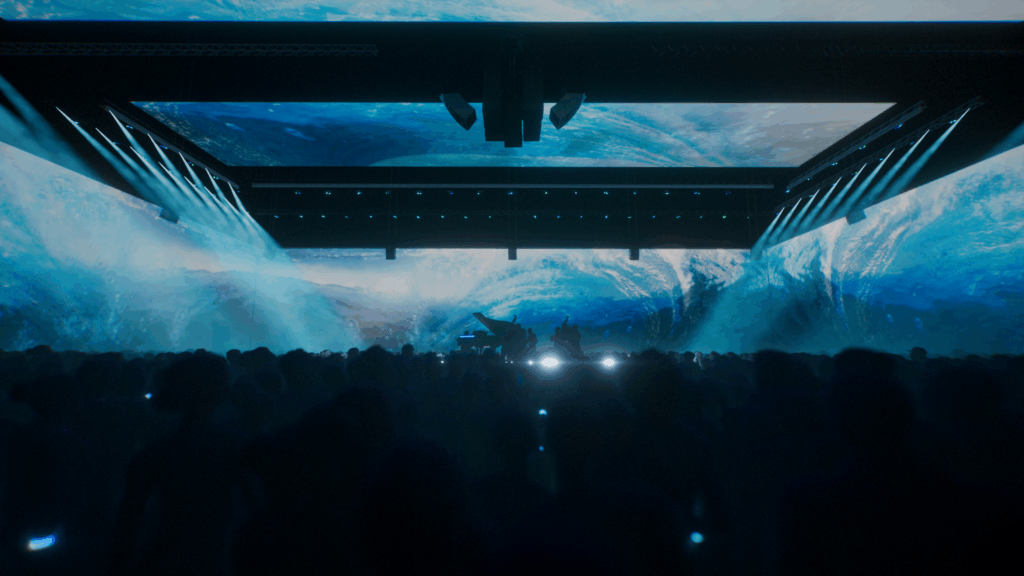



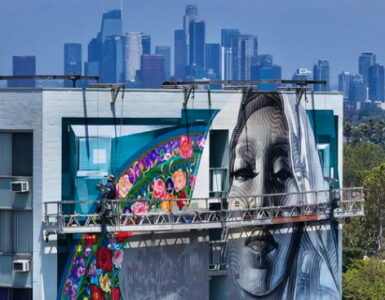
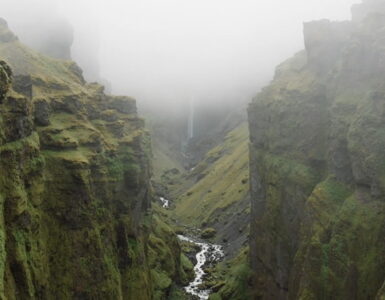
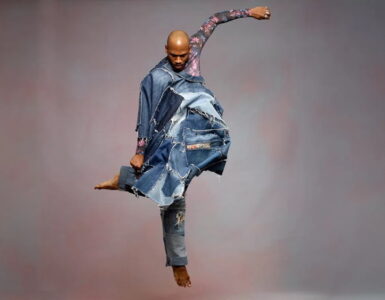
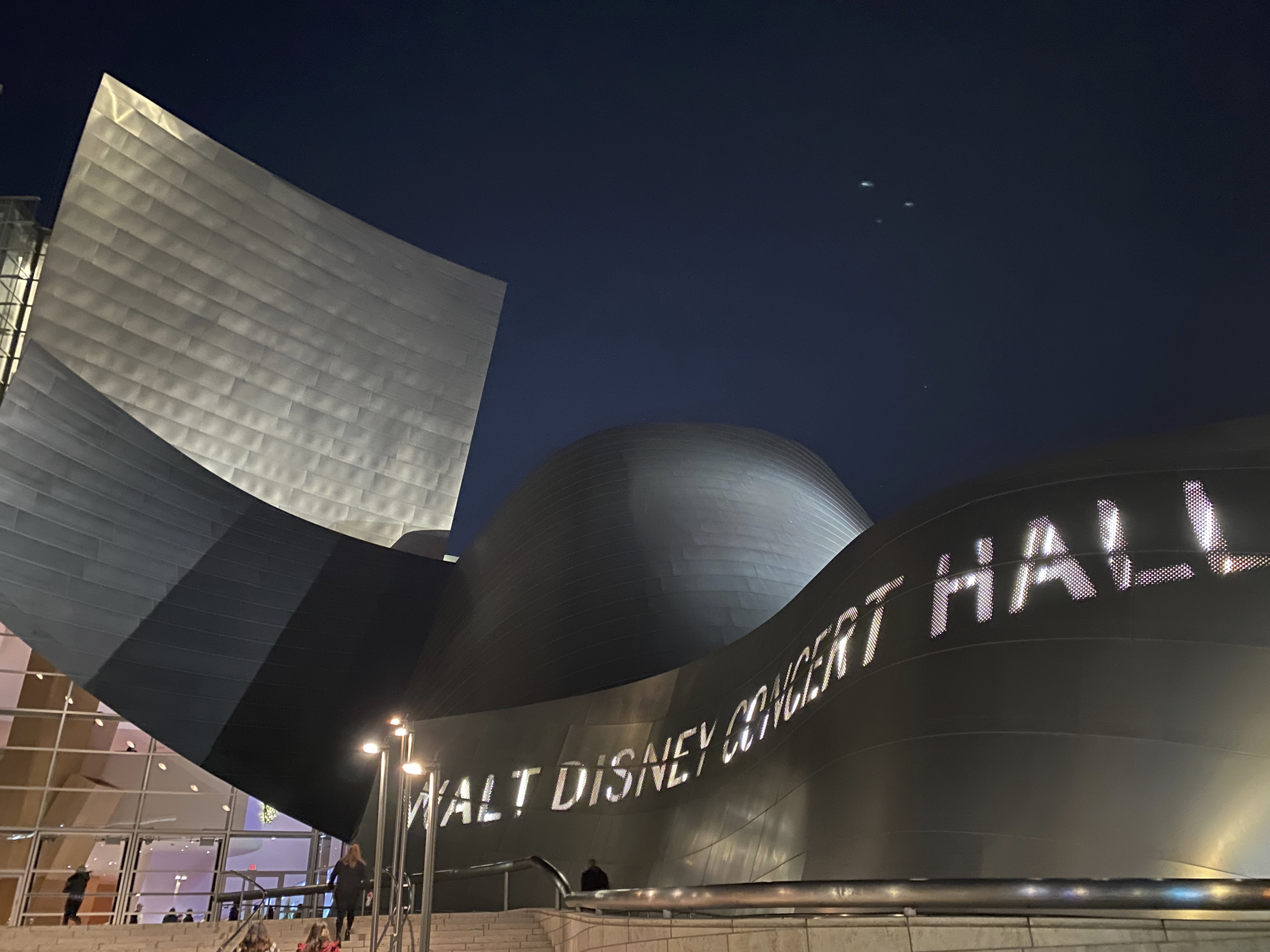

[…] Castillon. Together with his Paris-based creative studio, Motion Palace, Castillon spent the past year traveling around the world shooting the breathtaking visuals and helping to […]